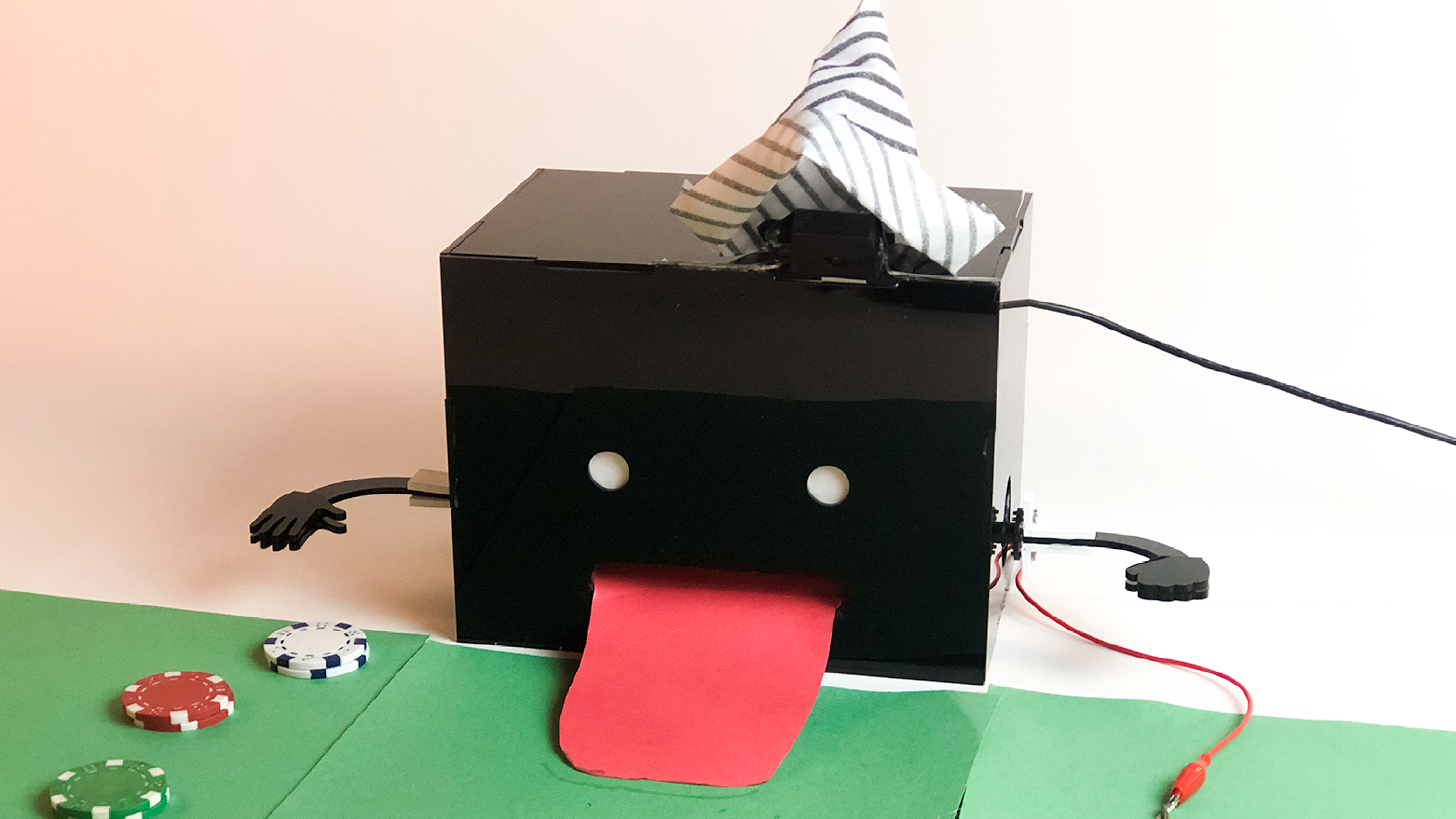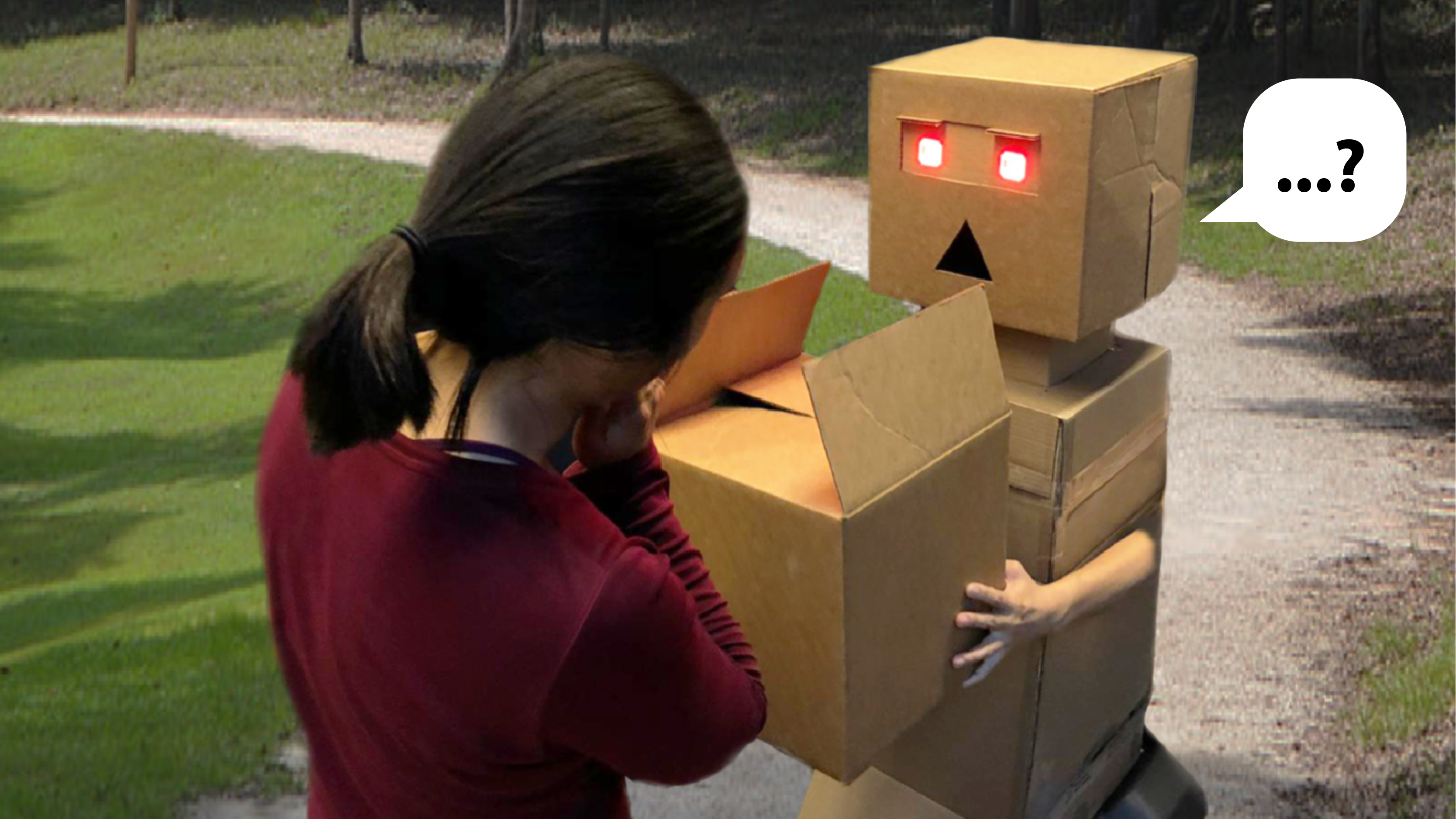Designing Emerging Technologies
Fall 2019 portfolio
During the Fall 2019 semester, I took a class called Designing Emerging Technologies in which we designed and built systems using computer vision with Google Cloud Vision, speech recognition with Google Cloud Speech-to-Text/Text-to-Speech, virtual reality with Unity and Oculus Quest, and robotics with a Husqvarna Automower. Below are descriptions of my teams’ projects around these 4 themes.
jack black: a new player in blackjack counter culture
Katherine Song, Paul Stott, Yejun Wu, Annie Zheng

Jack Black is a blackjack-playing robot that places bets and makes calls, simultaneously maximizing a player’s chance of winning and freeing up the player’s attention so that the player may better enjoy the casino experience. Jack Black is playful in his mannerisms, bringing fun to the blackjack counter, which is conventionally stern. Jack Black may become a platform for his owners to learn blackjack (he can be programmed to narrate the rationale behind moves) or to more strongly critique blackjack culture without the embarrassment of acting inappropriately themselves (Jack Black may be programmed to roll his eyes, slam on the table, etc.). Furthermore, we envision a future in which “casino culture” is inclusive of automata like Jack. In such a future, bots may be pitted against each other as a means to compare players’ blackjack strategies or play alongside humans as characters who bring fun/excitement to the table.
soulflower
Ananya Nandy, Katherine Song, Sia Chang, Tina Taleb

SoulFlower is a potted plant that encourages healthier emotional intra- and inter- personal relationships. First, it helps its owners be more in touch with their emotions, which often go overlooked during a hectic day. Additionally, it encourages friends and roommates who step into the room to better understand the unspoken emotional context, avoiding potentially awkward or unintentionally hostile conversations. One flower of SoulFlower is capable of drooping and dancing, giving its owner instant feedback on the sentiment of sentences that are uttered. A bouquet within SoulFlower keeps track of the accumulated sentiment throughout the day, which is a useful indicator for people entering the room to see and adjust their words and actions accordingly. Our current embodiment of SoulFlower is for a single-person bedroom, but a future iteration may also find it in multi-person households, where its utility in mediating unspoken emotional communication and empathy would become especially prominent.
survival ad-venture
Will Oakley, Varda Shrivastava, Katherine Song, Kyle Trieu

Masked as a VR video game, Survival ADventure is an immersive experience that serves as a critical commentary on the pervasiveness of intrusive, targeted advertising. A user is stranded in a remote environment and is instructed to complete tasks that teach survival skills. Based on the user’s decisions in the game, the VR space becomes increasingly cluttered with seemingly relevant billboard ads that beckon the user to buy goods or services in “real life.” Survival ADventure aims to highlight and immerse us in the unsettling, overwhelming, and distracting nature of the targeted advertisements that we constantly navigate through in our lives. Additionally, as VR is an emerging technology, our project provokes questions of how advertisers might utilize this space to collect data and deliver targeted ads.
encountering humans
Yakira Mirabito, Varda Shrivastava, Katherine Song, Paul Stott

Moving robots are currently equipped with limited responses when encountering humans as obstacles. A robot that encounters a human in its path will simply pause to allow the human to clear the way or, at best, will make an attempt to circumvent the human. While most people we observe on Berkeley’s campus move out of the way when encountering a moving robot, in a handful of cases, perhaps out of mere curiosity or perhaps with malicious intent, a human will test the robot by intentionally blocking its path. We envision a future in which robots will recognize such situations and express themselves in a way that encourages humans to move. Here, we implement a simple robot with two modalities of expression and test which is more effective. In the first mode, the robot attempts to evoke sympathy, and in the second, the robot attempts to scare the human into submission.